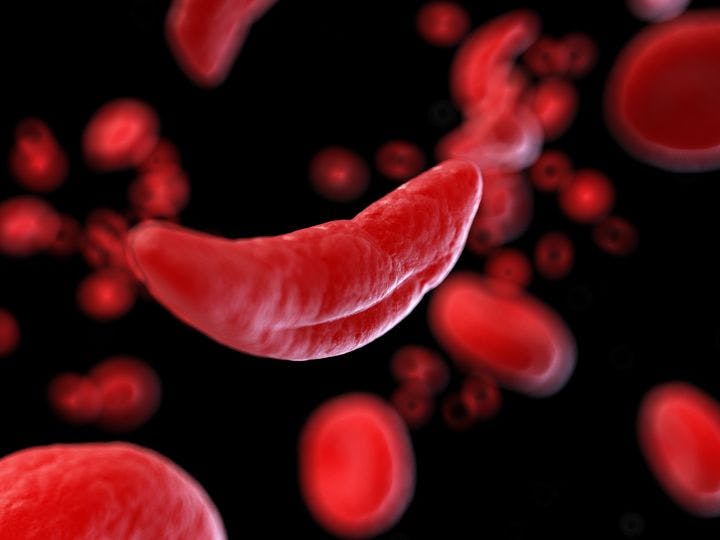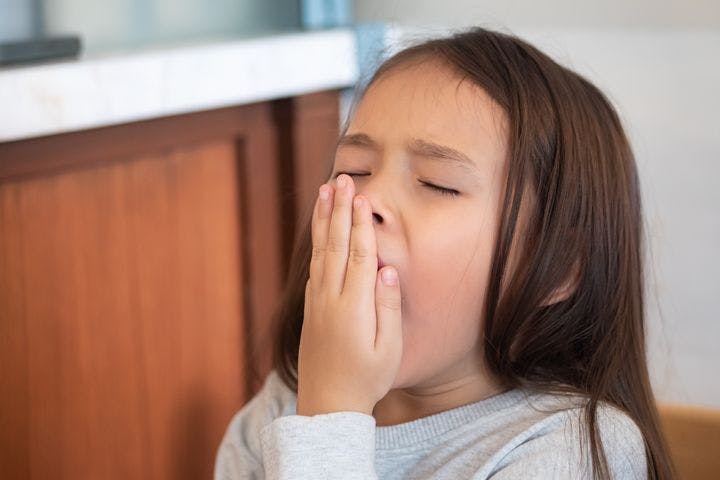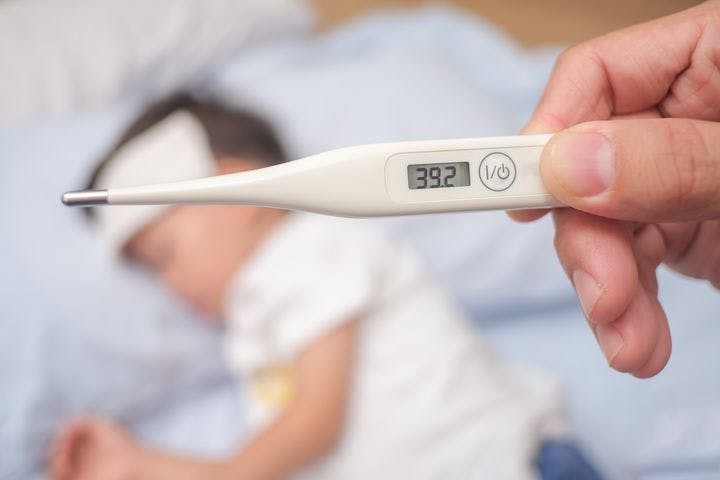Managing the Symptoms of Sickle Cell Disease in Children
Published | 7 min read
Children with sickle cell disease have two abnormal genes. Proper management is necessary to ensure that the condition doesn’t become life-threatening.

As the name suggests, sickle cell disease describes the presence of crescent-shaped red blood cells in the vessels. It’s also a group of many genetic disorders affecting haemoglobin – a protein that carries oxygen to the body’s organs and tissues and transports carbon dioxide to the lungs.
Unlike disc-shaped cells, these can’t bend or move easily, impairing blood flow. Consequently, a child may suffer a stroke, infections, eye problems, and episodes of pain (also known as pain crises).
How do Children Develop Sickle Cell Disease?
Children who are diagnosed with the condition have two sickle cell genes; one from each parent. Those with one sickle cell and normal haemoglobin gene have the asymptomatic sickle cell trait. If they have children, they may also pass down the diseased gene to them.
Children who inherit sickle cell and another abnormal gene are at risk of other forms of the disease, such as haemoglobin sickle cell or sickle beta thalassaemia.
“A weak Spleen restricts blood production and the Heart from being sufficiently nourished. Over time, it’ll prevent a timely replenishment of Kidney jing (essence) and provoke Yin (passive energy) Deficiency in the organ system, as well as the Liver. Subsequently, it can lead to a Yang (active energy) Deficiency or loss of blood and qi (vital life force), which puts a child at risk of falling critically ill.”
Eu Yan Sang TCM Physician Jolene Chong.
The Symptoms of Sickle Cell Disease in Children
The symptoms of sickle cell disease will start to develop in children within the first five to 12 months of life. Each child’s symptoms may vary, both in type and severity. Here are some symptoms to look out for.
Anaemia

This is the most common symptom of the condition and can children with anaemia will feel fatigued and look pale.
Jaundice
Another prominent symptom of sickle cell disease stems from abnormal red blood cells dying before the liver can filter them out. The yellow in a child’s skin appears when a substance called bilirubin is released by dead cells.
Pain crises
Sickle cells can get stuck in smaller blood vessels, impeding blood flow. It triggers a sudden pain in various parts of a child’s body, but mostly in their chest, arms and legs.
Tissue death and swelling of the fingers and toes may also be a result of disturbed blood flow.
Acute chest syndrome
A child can develop potentially deadly acute chest syndrome when sickle cells get stuck to the tiny lung vessels. It can happen suddenly, especially if they have an infection, or are dehydrated.
Be mindful that it has the same characteristics as pneumonia, but may be accompanied by fever, pain, or a violent cough.

Splenic sequestration
The spleen, too, can enlarge and become painful when sickle cells accumulate within the organ. If left untreated, a child’s haemoglobin levels may drop rapidly, causing hypovolemic shock and death within hours.
Hypovolemic shock refers to severe blood or fluid loss stopping the heart from pumping blood to other parts of the body, resulting in multiple organ failures.
What are the Treatment Options for Sickle Cell Disease in Children?
Getting an early diagnosis from a haematologist and taking steps to prevent further complications is important for treating the condition. To address pain crises, they should drink eight to 10 glasses of water daily.
Some of the treatment options that may be prescribed are:
- Pain medication
- Hydroxyurea (chemotherapy)
- Blood transfusions
- Stem cell transplant
- Folic acid supplements
- Regular eye examinations
- Vaccines and antibiotics
The Role of Alternative Medicine in Managing Sickle Cell Disease Symptoms
The sickle cell disease symptoms a child experiences depend on which disorder they’ve been diagnosed with. A licensed TCM practitioner will associate these symptoms with a body constitution imbalance and propose suitable treatments.
Herbal remedies
“
TCM physician Jolene Chong
Herbal remedies like Liu Jun Zi Tang (六君子汤),
Children with Heart Dysfunction are likely to experience chest pain, palpitations, poor sleep quality, and shortness of breath. Gui Pi Tang (归脾汤) and Tian Wang Bu Xin Dan (天王补心丹) nourish the Heart while supporting the Spleen’s production of blood and qi.
Kidney and Liver Yin Deficiencies relate to jaundice, tinnitus, dizziness, spontaneous sweating, vision problems, brittle hair and nails, or dry and irritable eyes.
Meanwhile, Kidney and Liver Yang Deficiencies can make your child sensitive to cold. They could also experience delayed growth and maturation, have loose stools, and have weak, cold, or swollen limbs.
You Gui Wan (右归丸) and Jin Kui Shen Qi Wan (金匮肾气丸) can be used to regulate these imbalances while boosting blood production.
Physical therapy
The combined use of acupuncture and moxibustion may be considered to achieve the same objectives as herbal remedies.
- Fei shu (BL13, 脾俞)
Wei shu (BL21, 胃俞) - Shen shu (BL23, 肾俞)
- Tai xi (KI3, 太溪)
- San yin jiao (SP6, 三阴交)
- Zu san li (ST36, 足三里)
Do this consecutively for ten days.
- Kidney or shen (肾)
- Liver or gan (肝)
- Spleen or pi (脾)
- Stomach or wei (胃)
- Endocrine or nei fen mi (内分泌)
- Subcortical or pi zhi xia (皮质下)
- Adrenal gland or shen shang xian (肾上腺)
Children must stay still during auricular acupuncture. If that isn’t possible, auriculotherapy is an alternative treatment. It can be performed using auricular seeds to stimulate pressure points.
In this treatment, a black vaccaria seed is attached to an adhesive tape and placed over corresponding points. Gently knead or press the points, three to five times a day. The tape should be secure for up to five days.
Paediatric tuina may also be performed on the
The quicker your child gets treatment for sickle cell disease, the more likely they are to keep complications at bay. Alternative remedies, too, can help support clinical treatment and ensure a more holistic management of their symptoms. Do seek consultation with a licensed TCM practitioner beforehand, as they’re best qualified to recommend a customised treatment plan for your child.
References
- National Heart, Lung, and Blood Institute. What Is Sickle Cell Disease? [online] [Accessed 19 December 2022]
- Nemours KidsHealth. Sickle Cell Disease. [online] [Accessed 19 December 2022]
- University of Rochester Medical Center. Sickle Cell Disease in Children. [online] [Accessed 19 December 2022]
Share this article on














